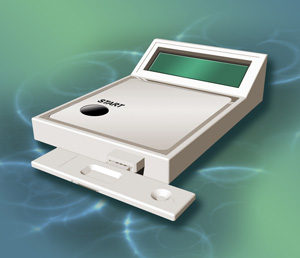Scientists at Pacific Northwest National Laboratory have discovered a way to increase the sensitivity of test strips that will enable creation of a portable biosensor that can address a major concern associated with incidents involving chemical or nerve agents - the need to quickly distinguish between individuals who have been exposed and the "worried well."
The sensor components resemble a pregnancy test strip and a small glucose testing meter. Its development will be discussed by principal investigator Yuehe Lin at the national meeting of the American Chemical Society.
Every disease has biomarkers, a change in the proteins that announces something is wrong. Lin and his team are creating a nanoparticle "label" that can increase the ability of a sensor to detect and interpret the message of biomarkers.

"Current test strip based-immunoassay technology has very good selectivity, but it can only give a positive or negative response," Lin said.
The researchers are working with an "electrochemical immunoassay approach." This involves using the antibody of a specific disease — a protein produced in response to an invading bacterium or other foreign substance — to attract the biomarker. Lin found that labeling a second antibody with a nanoparticle amplifies the biomarker's signal. Greater amplification means more precise readings.
Lin achieves this by removing the iron from a nanoparticle-sized ball of the protein ferrin, creating an empty "cage" called apoferritin, which he then loads with another metal, such as cadmium. The cadmium-filled cage is attached to one end of the reporting antibody, and the immuno-reaction product becomes electroactive.
"The electrochemical signal is amplified several hundreds to thousand times because of the metal ions," Lin said. "This level of sensitivity will allow detectors to be very precise in identifying the concentration of biomarkers in biological samples."
The five-year biosensor effort is funded by a $3.5 million grant from the National Institutes of Health Countermeasures Against Chemical Threats (CounterACT) Research Network through the National Institute of Neurological Disorders and Stroke. A key resource for the biosensor research is the Environmental Molecular Sciences Laboratory, a Department of Energy national scientific user facility located at PNNL.






Comments